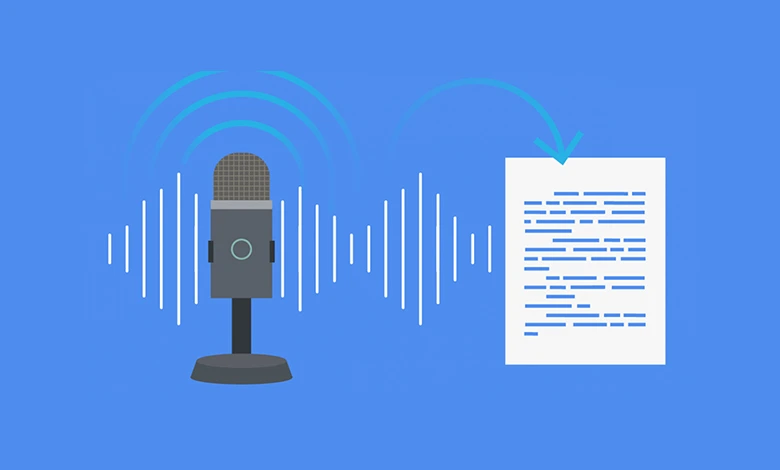What is Text to Speech? How to Make Text to Speech?

What is Text to Speech? How to Make Text to Speech? How does the Text to Speech Algorithm Work? The term “Text to Speech” (TTS) is a technology used to convert text into speech. TTS allows a computer to voice a text in a readable way. Let’s learn all there is to know about Text to Speech.
What is Text to Speech?

Text to Speech (TTS) is a technology that automatically converts written text into a spoken form. Text-based TTS systems are used to mimic the natural language speech of texts. In addition to helping visually impaired people read written material or listen to documents, this technology is used for voice assistants, navigation systems, advertising and promotional materials, audio books and many other applications.
TTS technology uses two main components to read text in an intelligible voice: text analysis and voice synthesis. Text analysis separates text from grammar and pronunciation rules so that voice synthesis can take place accurately. Voice synthesis uses various synthesizing methods to convert text into audio form.
Text-based TTS systems are synthesizing systems that can read existing text aloud in a live voice. These systems usually work by combining pre-recorded voices or synthetically generated voices. Advanced TTS systems also take into account voice elements such as intonation, intonation and stress to create a natural speaking style.
There are many TTS services and applications available today. These services allow users to read text aloud in different languages and tones. Easily available on both desktop and mobile devices, TTS applications can be used by selecting texts or typing them directly into the device.
How to Make Text to Speech?

Text to Speech (TTS) requires an approach that takes into account factors such as text analysis, voice synthesis, voice features and naturalness, language and tone of voice. This approach uses a variety of software, APIs and tools to automatically convert written text into an audio form.
Here are the steps to make TTS:
- The first step is text analysis so that the TTS system can understand the text. Text analysis parses the text into its grammatical structures, recognizes words and phrases and applies pronunciation rules. This step is important for understanding the meaning and structure in the text.
- After text analysis, voice synthesis is performed to read the text aloud. In this step, an algorithm or engine is used that produces audio output from the text. Voice synthesis is a key component of text-based TTS systems and plays an important role in providing the user with an intelligible, natural voice.
- The TTS system takes into account various vocal characteristics to create a natural style of speech when reading text. These include factors such as intonation, intonation, stress and speed. These features make the text sound more natural and intelligible.
- A TTS system should be able to read texts aloud in a variety of languages and tones. Advanced TTS systems take into account different language features (phonetic structure, word combination rules, etc.) to ensure correct pronunciation and sound. Furthermore, TTS systems can offer different tones of voice according to users’ preferences and adjustments.
- There are many APIs and tools for developing TTS applications. These APIs and tools allow developers or users to use TTS functionality in their applications. These APIs enable voice output from text, usually by interacting with a server.
Text to Speech (TTS) also includes open source libraries that enable developers to build their own TTS systems. For example, tools such as pyttsx3 for Python, Google Cloud Text-to-Speech API, and Microsoft Azure Cognitive Services TTS are some of the resources available to developers to voice text.
How does the Text to Speech Algorithm Work?

Text to Speech (TTS) algorithms consist of several processes to produce audio output from text.
Here is how the TTS algorithm works:
- Text Analysis: The first step is to analyze the text grammatically. Text analysis identifies words, phrases and grammatical structures (e.g. conjugation, pronouns, affixes, etc.) in the text. Text analysis enables the parsing of words according to grammatical rules and the understanding of the meaning of the text.
- Phonetic Processing: After text analysis, phonetic processing is performed for sound synthesis. In this step, the phonetic information (phonetic transcription) of each word or sound element in the text is determined. Dictionaries, grammatical rules and exceptions are used to determine how words and sounds are pronounced. In accordance with phonology and phonetic rules, each word or phoneme is assigned an appropriate phoneme.
- Acoustic Modeling: Acoustic modeling of text segments is performed using the results of text analysis and phonetic processing. Acoustic modeling involves the use of mathematical models to create audio segments containing different language and speech features. Sound segments are a mathematical structure representing specific features of language (frequency, duration, vocal shape, etc.).
- Synthesis: While acoustic modeling generates audio tracks for each segment of the text, the synthesis process combines these audio tracks together to produce an audio extract of the text. In the synthesis process, the sounds of each segment of the text are combined, and extraction, transformation and synthesis are applied to create a natural speech stream.
- Post-Processing: The synthesized audio output can be edited and finalized according to its intended use. In the post-processing step, features such as speed, intonation, stress and intonation of the audio output can be adjusted and the voice can be made more natural, intelligible and human-like. This step aims to achieve better fluency and naturalness of the text.
The TTS algorithm consists of a series of steps, from text analysis to acoustic modeling, synthesis and post-processing. These steps work together to create a natural way of speaking and a comprehensible audio output.
Text to Speech (TTS) algorithms grammatically analyze the text, apply phonetic processing, build acoustic models and produce the audio output through the synthesis process. These steps are integrated to create a natural speech flow and convey meaning.
You may be interested 👇
👉 What is Localhost and What Does It Do?
👉 What is an IP Address and What Does It Do? IP
👉 What is Domain Authority (DA), Page Authority (PA)?
👉 Click to follow the Student Agenda on Instagram




